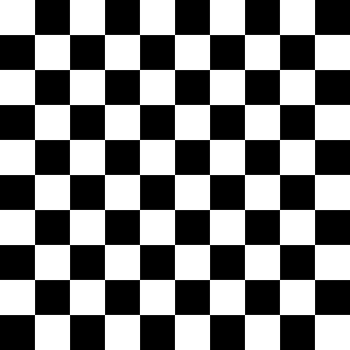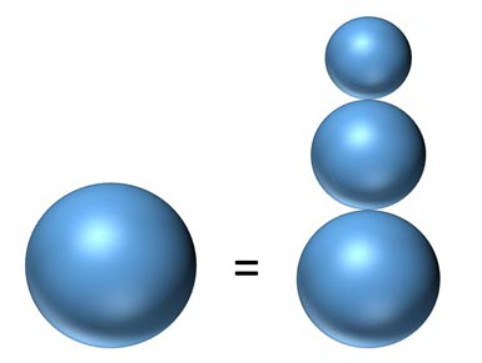
A problem by Russian mathematician Viktor Prasolov: Prove that it’s impossible to cut a 10×10 chessboard into T-shaped tiles of 4 squares each.

A problem by Russian mathematician Viktor Prasolov: Prove that it’s impossible to cut a 10×10 chessboard into T-shaped tiles of 4 squares each.
A problem from the Stanford University Competitive Examination in Mathematics:
How old is the captain, how many children has he, and how long is his boat? Given the product 32118 of the three desired numbers (integers). The length of the boat is given in feet (is several feet), the captain has both sons and daughters, he has more years than children, but he is not yet one hundred years old.
From John Scott, The Puzzle King, 1899:
“A farmer, being asked what number of animals he kept, answered: ‘They’re all horses but two, all sheep but two, and all pigs but two.’ How many had he?”
From Lee Sallows:
Can you complete the ‘self-descriptive crossword puzzle’ at left below? As in the solution to a similar puzzle seen at right, each of its 13 entries, 6 horizontal, 7 vertical, consists of an English number name folowed by a space followed by a distinct letter. The number preceding each letter describes the total number of occurrences of the letter in the completed puzzle. Hence, in the example, E occurs thirteen times, G only once, and so on, as readers can check. Note that the self-description is complete; every distinct letter is counted.
Though far from easy, the self-descriptive property of the crossword enables its solution to be inferred from its empty grid using reasoning based on orthography only.

A puzzle by James M., an operations researcher at the National Security Agency:
Frosty the Snowman wants to create a small snowman friend for himself. The new snowman needs a base, torso, and a head, all three of which should be spheres. The torso should be no larger than the base and the head should be no larger than the torso.
For building material, Frosty has a spherical snowball with a 6-inch radius. Since Frosty likes to keep things simple, he also wants the radius of each of the three pieces to be a positive integer. Can Frosty accomplish this?
From The Book of 500 Curious Puzzles, 1859:
A blackleg passing through a town in Ohio, bought a hat for $8 and gave in payment a $50 bill. The hatter called on a merchant near by, who changed the note for him, and the blackleg having received his $42 change went his way. The next day the merchant discovered the note to be a counterfeit, and called upon the hatter, who was compelled forthwith to borrow $50 of another friend to redeem it with; but on turning to search for the blackleg he had left town, so that the note was useless on the hatter’s hands. The question is, what did he lose — was it $50 besides the hat, or was it $50 including the hat?
This is not so much a puzzle as a perplexity. “[I]n almost every case the first impression is, that the hatter lost $50 besides the hat, though it is evident he was paid for the hat, and had he kept the $8 he needed only to have borrowed $42 additional to redeem the note.”
A puzzle by Edward J. Barbeau, from the February 2007 issue of Crux Mathematicorum:
A certain familiar island is inhabited by knights, who can only speak the truth, and knaves, who can only lie. One day a visitor meets three inhabitants, A, B, and C. The visitor asked, “How many knights are there among you three?”
A gave an answer, which the visitor didn’t hear. When the visitor asked B what A had said, B replied, “A said that there is one knight among us.” At this C said, “Don’t believe B. He is lying.”
What are B and C?
A puzzle by Henry Dudeney:
If five submarines, sunk on the same day, all went down at the same spot where another had previously been sunk, how might they all lie at rest so that every one of the six U-boats should touch every other one? To simplify we will say, place six ordinary wooden matches so that every match shall touch every other match. No bending or breaking allowed.
From reader Éric Angelini:
What is the smallest number that doesn’t have a 1 and yet has one?